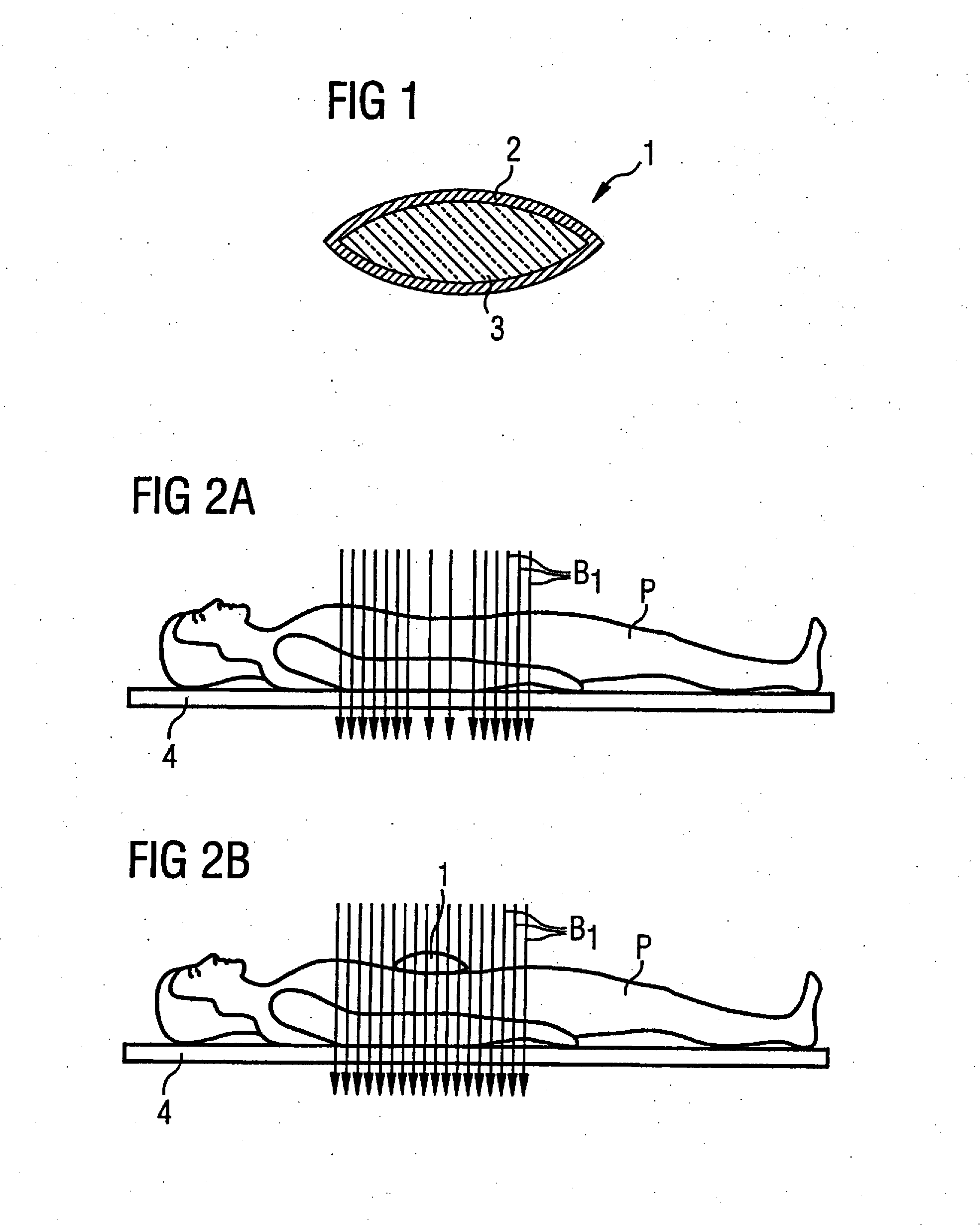Dielectric element and method for generating a magnetic resonance image therewith
a dielectric element and image technology, applied in the direction of magnetic variable regulation, instruments, applications, etc., can solve the problems of inhomogeneous penetration behavior of rf pulses, unwanted variations of received magnetic resonance signals, and inability to accurately detect the intensity of rf pulses, so as to reduce interference in magnetic resonance exposures
- Summary
- Abstract
- Description
- Claims
- Application Information
AI Technical Summary
Benefits of technology
Problems solved by technology
Method used
Image
Examples
Embodiment Construction
[0026] The dielectric element shown in FIG. 1 is a dielectric pillow 1 having an outer shell 2 made from plastic film and a filling 3 that contains a paramagnetic substance. The plastic film of the outer shell 2 is a biocompatible material that is relatively thin but nevertheless sufficiently stable to prevent escape of the filling 3 contained therein. The plastic film of the outer shell 2 is preferably fused all around.
[0027] In use, the dielectric pillow 1 can be covered with a washable pillowcase that can be changed before use of the dielectric pillow 1 with different patients. The plastic film of the outer shell 2 can advantageously by disinfected with typical means.
[0028] In the exemplary embodiment, the filling 3 is an aqueous sodium polyacrylate gel that incorporates a gadolinium complex as a paramagnetic substance. This special filling 3 has the advantage that it is completely safe for the patient, in addition to the desired properties of effecting homogenization of the tr...
PUM
| Property | Measurement | Unit |
|---|---|---|
| particle size | aaaaa | aaaaa |
| particle size | aaaaa | aaaaa |
| weight percent | aaaaa | aaaaa |
Abstract
Description
Claims
Application Information
 Login to View More
Login to View More - R&D
- Intellectual Property
- Life Sciences
- Materials
- Tech Scout
- Unparalleled Data Quality
- Higher Quality Content
- 60% Fewer Hallucinations
Browse by: Latest US Patents, China's latest patents, Technical Efficacy Thesaurus, Application Domain, Technology Topic, Popular Technical Reports.
© 2025 PatSnap. All rights reserved.Legal|Privacy policy|Modern Slavery Act Transparency Statement|Sitemap|About US| Contact US: help@patsnap.com



